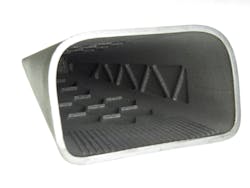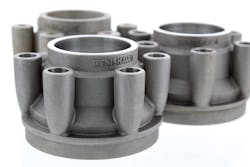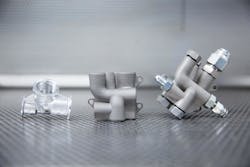3D printing helps to reduce weight and increase performance. While aerospace was one of the first industries to experiment with the technology, many other industries followed. It seems like 3D printing’s motto is, “if it moves, 3D printing will improve it.” With this in mind, let’s take a quick look at 3D printing at the America’s Cup.
Sailing is no stranger to new technology and engineering. For hundreds of years sailing technology has expanded empires, economies, and societies. Today, companies are using 3D printing to stay ahead of the competition. This is true in manufacturing and sailing. Renishaw 3D printing technology is working with the Land Rover BAR’s yacht racing team. The yacht uses 3D printing for prototyping and end-use parts. 3D printing allows this British yacht-racing team to refine custom parts and reduce costs.
Sir Ben Ainsile formed the Land Rover Ben Ainsile Racing (BAR) team, and is a four-time Olympic gold medalist and America’s Cup winner. Ainsile is able to succeed by using technology to gain a competitive advantage anywhere possible: artificial intelligence, big data analytics, and, most recently, 3D printing.
“We use 3D printing at three different levels within the team,” says technical innovation group project manager George Sykes of PA Consulting. “The simplest level is as a prototyping and visualization tool. We manufacture a large number of custom parts and 3D printing allows us to make full-size prototypes in-house before we commit to a design.”
The team has a machine shop and 3D printing shop, but if the final part can be 3D printed, then that is the option used, because typically the cost can be significantly reduced. For example, the endcap for the boat’s bowsprit is a complex shape, designed to reduce the aerodynamic drag. It was ideal for 3D printing because there was no load involved, and a single item was required. In years gone by this would have been built with carbon fiber at great expense due to the time and skill of those involved. Now, with 3D printing the design can be developed and produced in a handful of hours at a much lower cost.
The bowsprit is normally a spar that extends off the front of a boat. It allows for a larger head sail to be used.
One of the earliest components the sailing team printed was a custom sheave case for the pulley in the daggerboard lift line. The part needed to with stand a high compressive load, good resistance to wear, and be lightweight. 3D printing was able to print a strong metal part that was hollow that worked well. It would have been very difficult to make this part any other way than additive manufacturing.
The team uses laser sintering powder-bed technology, building parts up in thin layers (typically 0.05 mm) of fine metallic powder. The part is printed in an argon inert atmosphere so the metal powder doesn’t react with oxygen or impurities found in air. The heat is applied using a laser beam—this is directed using software controlled mirrors, and focused to accurately weld the areas required to create the part.




